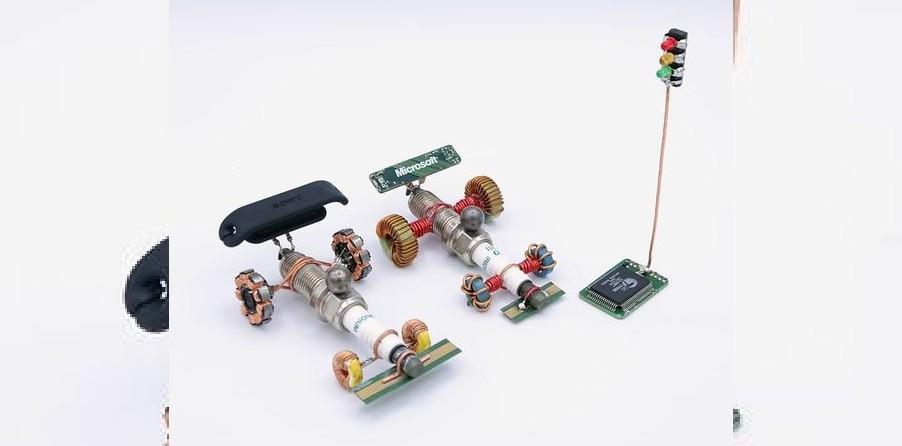导入 TEASOFT
Posted 卓晴
tags:
篇首语:本文由小常识网(cha138.com)小编为大家整理,主要介绍了导入 TEASOFT相关的知识,希望对你有一定的参考价值。

01 视频脚本
在 CSDN 中编写的视频脚本文件,在导入 TEASOFT 的过程中,现在还需要一节一节进行手工导入,极大限制导入速度。现在编写 Python 程序实现一键 CSDN 视频脚本文件导入 TEASOFT 的功能。
一、视频脚本文件格式
根据 CSDN 视频脚本文件的以下格式定义,先将 脚本文件对应的 Markdown 内容进行分割,对于能够导入的内容提炼出来。然后在利用 DOPASTE Python 脚本文件导入 TEASOFT 软件。 脚本视频文件的格式:
- 分别所有一级、二级、三级级标题之内的内容;
- 对于每一段之间,判断是否存在如下 Markdown 文档标致:
- 具有 &thinsp 或者 “ ”、“【】” 等表示符
- 具有 #pic_left 表示。
对于每一段分割之后,在调用 “dopaste” 软件通过 clipboard 进行内容传送。
二、Python 程序
导入软件为 “CSDN2DOP”。
1、Python代码
#!/usr/local/bin/python
# -*- coding: gbk -*-
#============================================================
# CSDN2DOP.PY -- by Dr. ZhuoQing 2022-10-01
#
# Note:
#============================================================
from head import *
csdn_title = '写文章-CSDN博客'
#------------------------------------------------------------
tspsendwindowkey(csdn_title, " ", noreturn=1)
tspsendwindowkey(csdn_title, "ac", control=1,noreturn=1)
strall = clipboard.paste()
tspsendwindowkey(csdn_title, "z", control=1)
#------------------------------------------------------------
segdim = []
tempdim = []
strdim = strall.split('\\n')
#------------------------------------------------------------
def titlestring(s):
if s[:1] != '#': return 0
ss = s.split(' ')
if len(ss) < 2: return 0
if ss[0] == '#': return 1
if ss[0] == '##': return 2
if ss[0] == '###': return 3
if ss[0] == '####': return 4
if ss[0] == '#####': return 5
if ss[0] == '######': return 6
return 0
def spaceofflen(s):
return len(s.replace(' ','').replace('\\n', '').replace('\\r',''))
def stringflag(s):
if s.find(' ') >= 0: return 1
if s.find(' ') >= 0: return 1
if s.find('【】') >= 0: return 1
  if s.find('#pic_left') >= 0: return 1
return 0
#------------------------------------------------------------
addflag = 0
for s in strdim:
if spaceofflen(s) == 0: continue
sharpnum = titlestring(s)
if sharpnum == 1:
if len(tempdim) > 1:
segdim.append(tempdim)
tempdim = []
addflag = 1
tempdim.append(s)
continue
if sharpnum == 2:
if len(tempdim) > 1:
segdim.append(tempdim)
tempdim = []
addflag = 2
tempdim.append(s)
continue
if sharpnum == 3:
if len(tempdim) < 2 or addflag >= 3:
if len(tempdim) > 1:
segdim.append(tempdim)
tempdim = []
addflag = 3
tempdim.append(s)
continue
if addflag > 0:
if stringflag(s):
tempdim.append(s)
#------------------------------------------------------------
for sd in segdim:
printf(sd)
printf(' \\a')
clipboard.copy('\\n'.join(sd))
tspexecutepythoncmd('dopaste # *')
for i in range(20):
time.sleep(1)
s = clipboard.paste()
if s.find('DOPASTE END') >= 0:
clipboard.copy("")
break
tspbeep(2200, 25)
printf('CSDN2DOP END.\\a')
#------------------------------------------------------------
# END OF FILE : CSDN2DOP.PY
#============================================================
2、DOPASTE
需要对于DOPASTE 软件进行修改。具体代码为:
#!/usr/local/bin/python
# -*- coding: gbk -*-
#============================================================
# DOPASTE.PY -- by Dr. ZhuoQing 2021-10-07
#
# dopaste <ssss # 【ssss.zip】
# dopaste =ssss # 【ssss】
#
# Note:
#============================================================
from head import *
import urllib.request
from PIL import Image
from io import BytesIO
import win32clipboard
import requests
import zipfile
import cv2
csdn_title = '写文章-CSDN博客'
#------------------------------------------------------------
outdir = r'd:\\temp'
microvideo_dir = r'd:\\Nutdisk\\MicroVideo'
microvideo_mooc = r'd:\\MooC\\MicroVideo'
MAX_LENGTH = 10
picselflag = 0
FILENAME_LENGTH = 128
#------------------------------------------------------------
def data82data(data):
data[data < 0x80] = 0
data[data != 0] = 1
datashape = shape(data)
W = datashape[-1]//8
H = datashape[0]
data = data.reshape(size(data))
bits = array([1,2,4,8,16,32,64,128])
data = data.reshape(-1, 8) * bits
data8 = sum(data.T,0).reshape(H,W)
return data8
#------------------------------------------------------------
def img2databuf(imagefile):
img = cv2.imread(imagefile)
gray = cv2.cvtColor(img, cv2.COLOR_BGR2GRAY).astype(uint8)
data = data82data(gray).astype(uint8)
data = data.reshape(size(data)).tobytes()
datalen = int.from_bytes(data[:4], 'little')
filename = data[4:4+FILENAME_LENGTH].decode('gbk').strip('\\x00')
return datalen, filename, data[4+FILENAME_LENGTH:]
def img2datafile(imagefile, datafile):
datalen, filename, data = img2databuf(imagefile)
printff(datalen, filename)
with open(datafile, 'wb') as f:
f.write(data[:datalen])
return filename
#------------------------------------------------------------
def extractGIFimage(giffile, outdir):
try:
im = Image.open(giffile)
except IOError:
printf("Can not load %s ."%infile)
sys.exit()
i = 0
mypalette = im.getpalette()
firstfile = ''
basenameonly = os.path.basename(giffile).split('.')[0]
strid = basenameonly.find('_-')
if strid > 0: basenameonly = basenameonly[:strid]
try:
while True:
im.putpalette(mypalette)
new_im = Image.new("RGB", im.size)
new_im.paste(im)
savefile = os.path.join(outdir, '%s_%d.JPG'%(basenameonly, i))
new_im.save(savefile)
if i == 0: firstfile = savefile
i += 1
im.seek(im.tell() + 1)
except EOFError:
pass # end of sequence
#
im.close()
return firstfile
#------------------------------------------------------------
def str2bsim(s):
if s.find('![N]') >= 0: return 0
if s.find('![n]') >= 0: return 0
if s.find('![O]') >= 0: return 1
if s.find('![o]') >= 0: return 1
if s.find('![L]') >= 0: return 2
if s.find('![l]') >= 0: return 2
if s.find('![S]') >= 0: return 1
if s.find('![s]') >= 0: return 1
if s.find('![A]') >= 0: return 4
if s.find('![a]') >= 0: return 4
if s.find('![F]') >= 0: return 4
if s.find('![f]') >= 0: return 4
if s.find('![R]') >= 0: return 3
if s.find('![r]') >= 0: return 3
if s.find('![P]') >= 0: return 5
if s.find('![p]') >= 0: return 5
if s.find('![Q]') >= 0: return 6
if s.find('![q]') >= 0: return 6
if s.find('![S]') >= 0: return 7
if s.find('![s]') >= 0: return 7
if s.find('![1]') >= 0: return 9
if s.find('![2]') >= 0: return 10
if s.find('![3]') >= 0: return 11
if s.find('![4]') >= 0: return 12
if s.find('![5]') >= 0: return 13
if s.find('![6]') >= 0: return 14
if s.find('![7]') >= 0: return 15
if s.find('![8]') >= 0: return 16
if s.find('![9]') >= 0: return 17
if s.find('![0]') >= 0: return 18
return -1
#------------------------------------------------------------
def extractMPGimage(mpegfile, outdir):
fnonly = os.path.basename(mpegfile).split('.')[0]
cam = cv2.VideoCapture(mpegfile)
printf(mpegfile)
currentframe = 0
while True:
ret, frame = cam.read()
if ret:
filename = '%s_%04d.JPG'%(fnonly, currentframe)
outfile = os.path.join(outdir, filename)
cv2.imwrite(outfile, frame)
currentframe += 1
else:
break
cam.release()
return fnonly
#------------------------------------------------------------
def send_to_clipboard(clip_type, data):
win32clipboard.OpenClipboard()
win32clipboard.EmptyClipboard()
win32clipboard.SetClipboardData(clip_type, data)
win32clipboard.CloseClipboard()
def image2clipboard(filename):
image = Image.open(filename)
output = BytesIO()
image.convert('RGB').save(output, 'BMP')
data = output.getvalue()[14:]
output.close()
send_to_clipboard(win32clipboard.CF_DIB, data)
#------------------------------------------------------------
def zip2dir(filename, dirs):
dopfile = ''
basedir = ''
bsirfilename = ''
with以上是关于导入 TEASOFT的主要内容,如果未能解决你的问题,请参考以下文章